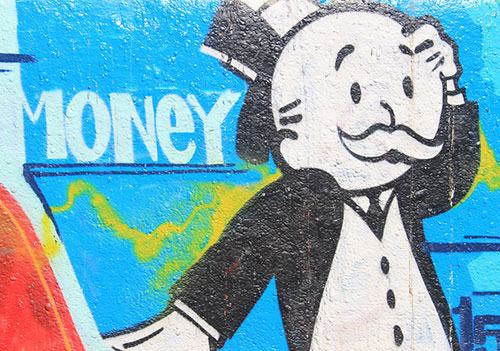
The English Heritage logo was adopted in 1984 and indicates the locations of more than 400 historic sites.
“I have long been an admirer of this ubiquitous symbol; it is a fine piece of public information design and it meets the necessary criteria for being an effective icon. It is distinctive, evocative, simple, easy to use, legible, and memorable. I would like to give credit to its creator but I have been unable to discover who designed it.”
— John Lloyd
Do you know who the designer is?

List of all blue plaques (on Wikipedia).

John Lloyd talks a bit more about the symbol on Grafik.




Comments
Not sure who designed the logo, but here’s a blue plaque I enjoyed: http://cloversignsblog.com/tag/blue-plaque/
Amanda of @FollowTheBrownSigns knows it was an in-house job, but isn’t sure who the designer is.
Does anyone know what the inspiration for the logo is?
According to the below link — the plaques were many colors and materials before blue was chosen as the principal colour in order to stand out best against London’s buildings. In 1938, design of the blue plaque was created by an unnamed student of the Central School of Arts and Crafts. This design omitted the former wreath and ribbon motif, and simplified the overall layout, allowing a bolder spacing and arrangement of the lettering.
http://www.english-heritage.org.uk/discover/blue-plaques/about/design/
It looks like it was tweaked by a company called Aqueduct in 2005. They were paid £67,550 for the tweak and guidelines. You can read more about it here via a freedom of information request made a few years ago; https://www.whatdotheyknow.com/request/branding_8
Unfortunately they (English Heritage) don’t know who designed the original. My guess is that it was in house. Otherwise I’m sure somewhere someone would have bragged about doing it. It’s a great symbol.
The English Heritage logo was designed by Negus & Negus. Dick Negus, Mike Abrahams, Phil Amis, Mick Thorpe, Geoffrey Adams, David Baldock and a few others whose names I sadly cannot remember. We came up with the name as well as the symbol. The organisation was originally called something like the Commission for Historic Buildings in England… we wanted to make something as memorable as the National Trust… hence shortening the name and the (not so) simple symbol that reminds of site plans, castle crenelations, windows! Negus & Negus were one of the great design studios of the 70s and 80s, but who seem to have been forgotten by most design historians. We created the original British Airways identity and many others that are still out there after too many years!
Some thoughts on the possible inspiration for the symbol are given here:
https://www.grafik.net/category/pictoform/past-signs
I’d not been on that page, Richard. Interesting to see the inscription taking place.
Nice find, Lee. I’ve pasted a bit of that below. There are some pitches I don’t mind taking part in, as long as there’s a pitch fee.
—
Q/ When was your current logo, corporate style, graphics and branding implemented?
A/ We believe the logo came into being when English Heritage was established in 1984. Then in 2005 a project to produce a set of brand guidelines and to assess the logo’s suitability for use in new media platforms was completed. The project was conducted with Aqueduct, an external branding and design agency.
Q/ Who designed it? How much were the designers paid for their services?
A/ The brand guidelines, including the simplifications to the design of the logo, were made by Aqueduct, who were appointed through a pitch situation. In total, Aqueduct received £67,550 for the work.
Q/ Were other designers consulted? Was there competition? If so, who was involved, and was any payment made to unsuccessful firms?
A/ A pitch situation was conducted between four agencies and, as far as we are aware, a pitch fee wasn’t paid.
—
I can’t be sure, but I’m told that the design is based on the footprint of the former bell tower of Salisbury Cathedral.
The typography of these sign plaques just looks perfect, and also the way the signs were embedded into the wall. The arrangement of the verbiage makes the letters easy to read as well. Great job.
Here is a link to the English Heritage blue plaques web pages. At the bottom of the main page is a video of Sue and Frank Ashworth making a plaque down in Cornwall. https://www.english-heritage.org.uk/visit/blue-plaques/about-blue-plaques/
It really look a lot like Hong Kong housing Department logo…
https://hos.housingauthority.gov.hk/50A/en/index.html